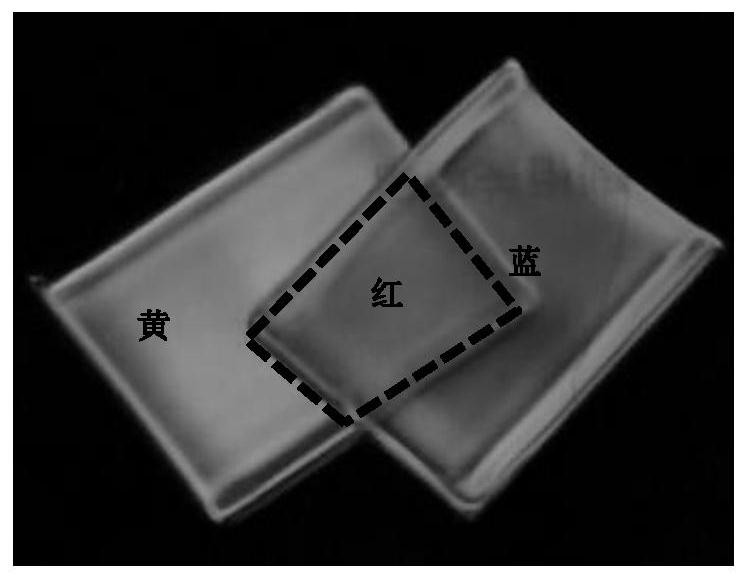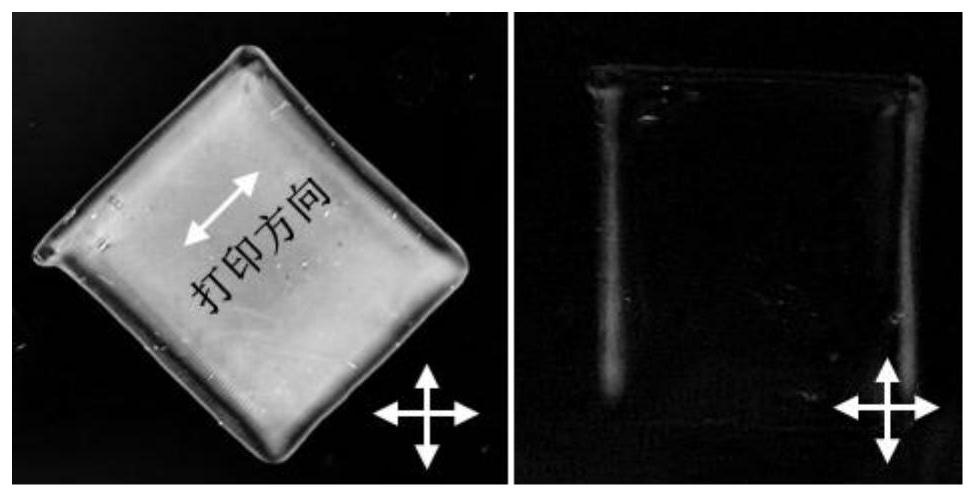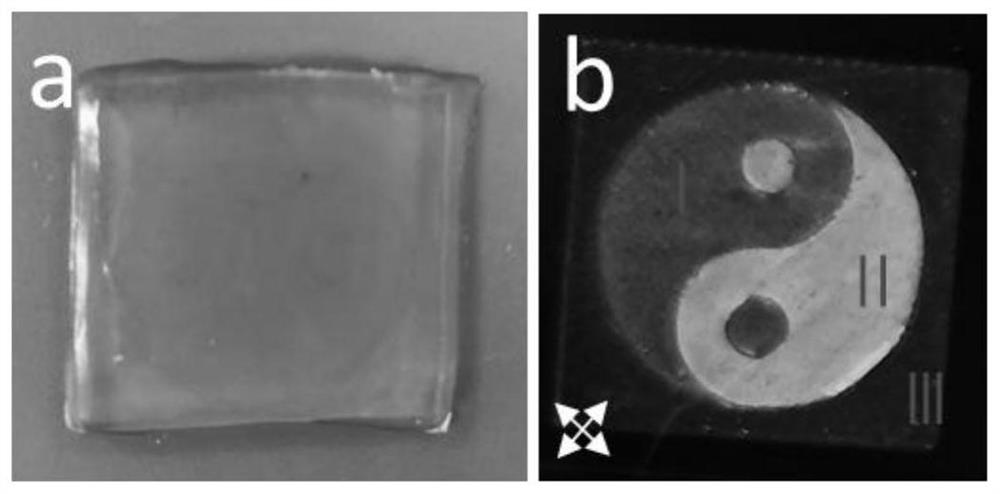Preparation method and application of nanocellulose polymer optical composite hydrogel
A nanocellulose and composite hydrogel technology, applied in optics, nonlinear optics, instruments, etc., can solve the problems of hard, brittle and easily damaged, sudden decrease in strength, uneven color dispersion, etc., and achieve low content and uniform color. Effect
- Summary
- Abstract
- Description
- Claims
- Application Information
AI Technical Summary
Problems solved by technology
Method used
Image
Examples
Embodiment 1
[0031] Configuration contains 2.0wt% nanocellulose, 2mol / L acrylamide, relative monomer content 0.2wt% initiator 2-hydroxyl-4-(2-hydroxyethoxy)-2-methyl propiophenone, relative monomer content 0.1wt% crosslinking agent N,N-methylenebisacrylamide, 5wt% lithium magnesium silicate solution, and mix well. Using a 340 μm inner diameter needle, 10 4 Pa / s extrusion pressure, 12mm / s needle moving speed, print 3 layers with 3D printer. The sample was placed in a UV light box for 10 minutes to initiate cross-linking polymerization, and unreacted monomers, initiators, and cross-linking agents were removed to obtain a nanocellulose / polyacrylamide composite hydrogel. The sample showed a uniform yellow color under crossed polarized light. Such as figure 1 shown.
Embodiment 2
[0033] Configuration contains 0.2wt% nanocellulose, 2mol / L acrylamide, relative monomer content 0.2wt% initiator 2-hydroxyl-4-(2-hydroxyethoxy)-2-methyl propiophenone, relative monomer content 0.1wt% crosslinking agent N,N-methylenebisacrylamide, 5wt% lithium magnesium silicate solution, and mix well. Using a 340 μm inner diameter needle, 10 4Pa / s extrusion pressure, 12mm / s needle moving speed, print 3 layers with 3D printer. The sample was placed in an ultraviolet light box for 10 minutes to initiate cross-linking polymerization, and unreacted monomers, initiators, and cross-linking agents were removed to obtain nanocellulose / polyacrylamide composite hydrogel. Under crossed polarized light, when the printing direction of the sample is 45° to the polarizing direction of the polarizer, the polarization intensity is the strongest and shows uniform white color; when the printing direction of the sample is rotated parallel to the polarization direction of the polarizing plate, th...
Embodiment 3
[0035] Configuration contains 4.0wt% nanocellulose, 2mol / L acrylamide, relative monomer content 0.2wt% initiator 2-hydroxyl-4-(2-hydroxyethoxy)-2-methylpropiophenone, relative monomer content 0.1wt% crosslinking agent N,N-methylenebisacrylamide, 5wt% lithium magnesium silicate solution, and mix well. Using a 340 μm inner diameter needle, 10 4 Pa / s extrusion pressure, 12mm / s needle moving speed, print 3 layers with 3D printer. Place the sample in a UV light box for 10 minutes to initiate cross-linking polymerization, remove unreacted monomers, initiators, and cross-linking agents, and obtain nanocellulose / polyacrylamide composite hydrogel. The sample shows a uniform orange-red color under crossed polarized light .
PUM
 Login to View More
Login to View More Abstract
Description
Claims
Application Information
 Login to View More
Login to View More - R&D
- Intellectual Property
- Life Sciences
- Materials
- Tech Scout
- Unparalleled Data Quality
- Higher Quality Content
- 60% Fewer Hallucinations
Browse by: Latest US Patents, China's latest patents, Technical Efficacy Thesaurus, Application Domain, Technology Topic, Popular Technical Reports.
© 2025 PatSnap. All rights reserved.Legal|Privacy policy|Modern Slavery Act Transparency Statement|Sitemap|About US| Contact US: help@patsnap.com



